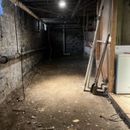Alternative to polyethylene vapor barrier?
Hello friends. My 1926 Western Maryland house has cement in half the basement and dirt floor in the other. There is a lot of dampness as a result. I’m definitely improving the grading to reduce water penetration but I think this won’t stop being an issue. I can obviously use a poly vapor barrier sheet but we are trying (with far from full success of course) to reduce plastic use as much as possible. Do any of you have ideas about this? I think that even if we out in a cement floor the typical process would involve a poly vapor barrier under the cement, right?
Many thanks in advance!
GBA Detail Library
A collection of one thousand construction details organized by climate and house part










Replies
Hopefully an expert will respond. In the meantime, my sense is that the environmental impact of a poured concrete slab would far outweigh that of the plastic, because of the CO2 released during curing. In fact, people on this site have pursued slab-less floor assemblies that use a plastic barrier in conjunction with plywood, because they are trying to reduce the carbon footprint.
Ok very interesting point. Thank you. I still am thinking about this and would like to have to concrete floor but this is helpful!
My basement is in similar shape, and although I try to minimize carbon emissions and I'm comfortable with non-standard approaches--including concrete-free slabs--I recommend doing what I plan to do at my house, which is to add a few inches of crushed stone to create a gas-permeable drainage layer, topped with heavy-duty poly sheeting and a thin concrete slab. Making decisions that will reduce our impact on the planet is important, but in my opinion it's not as important as building durability and occupant health, both of which would likely be better with the use of plastic and concrete in a case like this.
Thank you. I’m indeed trying to balance in my personal decisions between purity and functionality! I like your solution.
johnnydc,
This is one of the few applications where there aren't really any good alternatives. Fortunately the amount of plastic necessary to cover a small basement is probably only equivalent to what is used to make many kids toys.
Ha! Some of the toys probably much more. Good point. I’ll try to take it with a grain of salt and put down that barrier. If I get permission from the boss
johnnydc,
I'd love to see plastic use reserved for things that it does best, not just for convenience. It's a strange world.
Malcolm, I agree. Plastic and petroleum in general are miracle materials; they can do things that nothing else can, and I am thankful that we have them available for those situations.
I'm going to use your comments as justification for why we should melt down half my kids toys, to re-use as vapor barriers.
Kyle,
Good luck with that!
There is a product out there known as "biopolyethylene". It's polyethylene, but it uses ethanol as a feedstock instead of petroleum. You end up with a sort of plastic sourced from corn, in a way. I've never used it myself, and don't have any sources, but you might be able to find some if you're really after that sort of thing. Note that since this is the exact same polymer as "regular" polyethylene, there is no different between the two in terms of functionality or longevity.
Bill